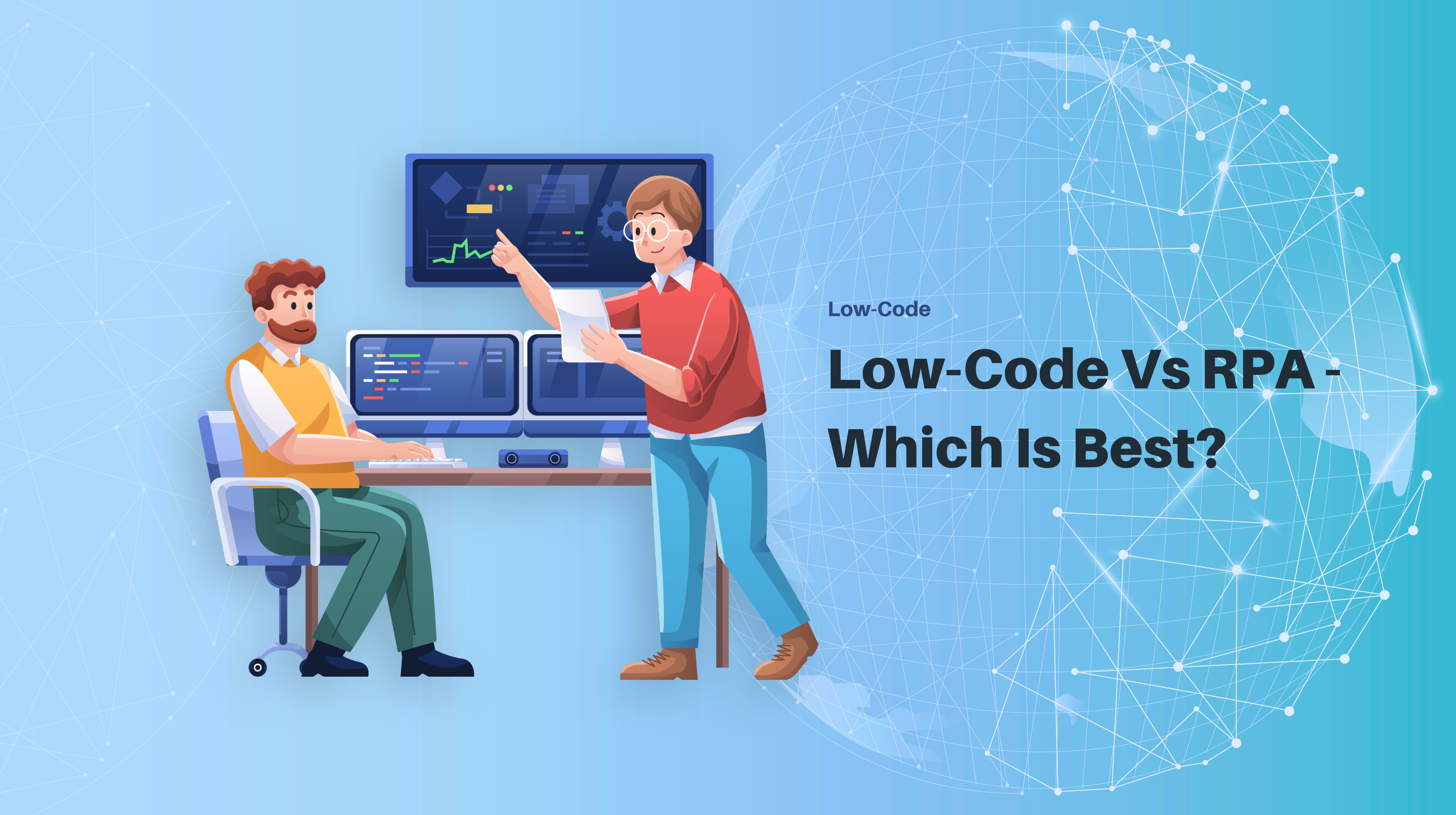As businesses navigate the complexities of the digital age, the quest for efficiency and cost-effectiveness has never been more critical. Two prominent ntools leading the charge are Robotic Process Automation (RPA) and low-code development platforms. Although both aim to simplify tasks and enhance productivity, they fulfill different roles in a company’s operational framework. In this blog, we will explore the nuances of RPA and low-code, illuminating their respective advantages and guiding you toward making the best choice for your business’s future.

What is RPA?
Understanding RPA
Robotic Process Automation (RPA) uses software robots (bots) to automate repetitive tasks that people usually do. These bots can interact with applications just like a human would, making them great for tasks that follow clear rules.
Benefits of RPA
- Increased Efficiency: RPA can perform tasks much faster than humans, saving time and increasing productivity.
- Cost Savings: By automating routine tasks, businesses can lower their labor costs and reduce mistakes.
- Consistency: RPA ensures tasks are done the same way every time, leading to better accuracy.
- Scalability: If your business grows, RPA can easily handle more tasks
without needing to hire more staff. - Compliance: RPA helps maintain compliance with regulations by following standard procedures.
Common Uses of RPA
- Data Entry: Automatically entering data into systems.
- Customer Onboarding: Collecting and verifying new customer information.
- Invoice Processing: Extracting data from invoices and processing payments.
What is Low-Code?
Understanding Low-Code
Low-Code Development platforms allow users to create applications with little to no coding experience. Users can build apps using visual tools, dragging and dropping components to create functionality quickly.
Benefits of Low-Code
- Quick Development: Low-code platforms enable faster application development, helping businesses launch solutions quickly.
- Flexibility: Businesses can easily modify applications to meet changing needs.
- Empowering Users: Non-technical users, or “citizen developers,” can
contribute to app development, reducing pressure on IT teams. - Easy Integration: Low-code platforms often come with pre-built integrations, making it simple to connect with other systems.
- Cost-Effective: By speeding up development, low-code can lower overall development costs.
Common Uses of Low-Code
- Internal Management Apps: Creating custom apps for project management or HR needs.
- Customer Engagement: Developing applications to improve customer service and interactions.
- Data Management: Building tools for collecting and analyzing data.
RPA vs. Low-Code: Which is Right for Your Business?
Choosing between RPA and low-code depends on your business needs. Here are
some factors to consider:
Type of Tasks
- Choose RPA if you want to automate repetitive, rule-based tasks. RPA works best for processes that are straightforward and can be easily defined.
- Choose Low-Code if you need to create new applications or customize existing ones. Low-code is ideal for developing solutions that require user interaction or complex workflows.
Skills Needed
- RPA usually requires minimal technical skills. Most users can implement RPA solutions without needing deep coding knowledge, although understanding process mapping can be helpful.
- Low-Code platforms are designed for both technical and non-technical users. However, having some basic development knowledge can help create better applications
Long-Term Goals
- Consider RPA if your main goal is to improve efficiency and cut costs by automating specific tasks quickly.
- Consider Low-Code if you aim to innovate and create applications that can adapt to changing business requirements.
Conclusion
Both RPA and low-code development can provide significant advantages for businesses looking to enhance their operations. The best choice for your organization depends on your specific needs, the type of tasks you want to automate or develop, and the skills available within your team. By understanding these factors, you can make an informed decision that will drive your business toward success.
FAQ's
What’s the main difference between RPA and low-code?
RPA automates repetitive tasks, while low-code helps users build applications
with little coding knowledge.
Can RPA and low-code work together?
Yes! Integrating RPA with low-code can create strong solutions that automate
tasks and allow for rapid application development
Which industries benefit most from RPA?
Industries with many repetitive tasks, such as finance, healthcare, and customer service, can gain significant benefits from RPA.
Do you need programming skills to use low-code platforms?
Not really. Low-code platforms are designed to be user-friendly, allowing non-
developers to build applications, though some basic knowledge can help.
How quickly can we implement RPA or low-code solutions?
The timeline varies. RPA can often be set up quickly for simple tasks, while low-
code projects may take more time based on their complexity.






